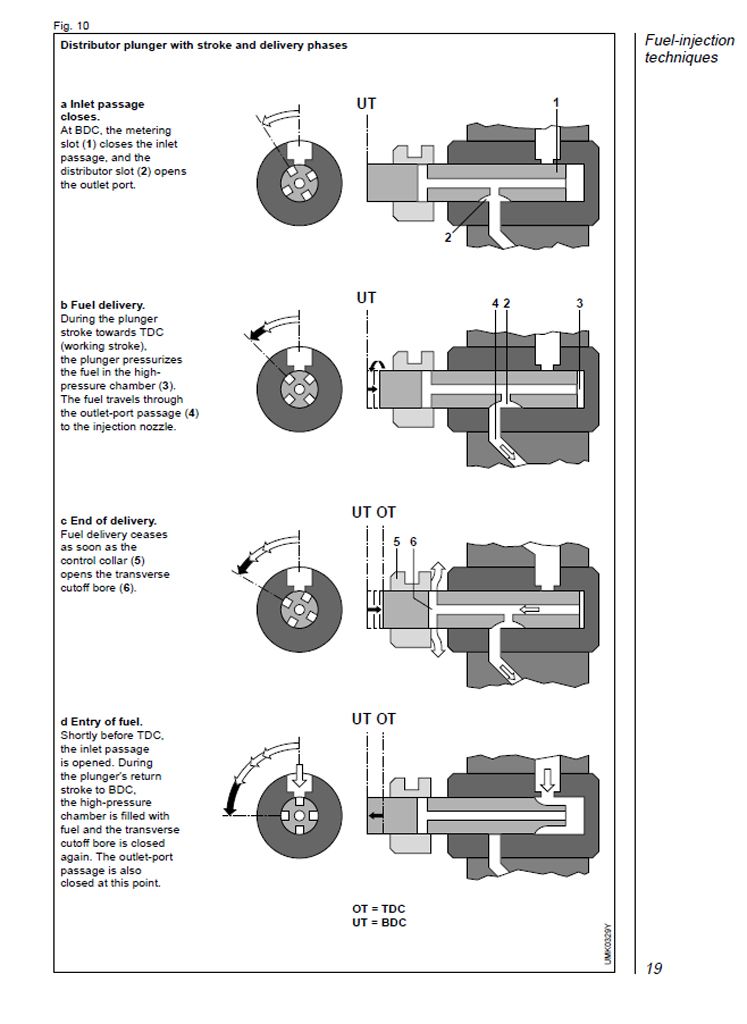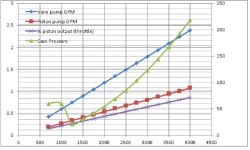Some pumps it seems from the factory are 1/2 turn from runaway and max out at ~150 hp, others are 3 turns from runaway and hit 250 (all 12mm). Why? is there some fulcrum lever geometry differences that make a difference?
One must first understand how the fuel is controlled by the IP.
Along with passages to move fuel into the H/R, and then to the DVs, there's a passage though the rotor that flows fuel back toward the case. It terminates at a spill-port that's covered by the control-collar. All the throttling linkage including that of the AFC eventually links to the control-collar. Want more fuel? Move the control-collar so it covers the spill-port more, Want less fuel? Move the control-collar so it uncovers the spill-port more.
Notice I say "More" in each case.
Understand that while the rotor is moving in and out of the head, it's also moving back and forth through the throttle-collar. My point is that the throttle-collar does not cover and uncover the spill-port in an instantaneous fashion (snap open / snap closed). More often than not, when coming off the throttle, the fuel is not stopped completely. It's simply reduced.
Getting to your question, a run-away situation is a result of having the fuel control linkage (indexing, main fuel screw, etc) set so that the minimum fueling is such that it allows enough fuel flow so as to overcome any of the engine's resistance to rotation (fine-print goes here).
The above being: the control-collar is not covering the rotor's spill-port enough at the end of the rotor's in and out stroke.
Make sense? It's been my experience the throttle's indexing sets the stage, and is complimented via the main fuel-screw. Pushing it till you're only able to set the engine's idle via the main fuel-screw is about as far as you'll be able to go without run-away.


